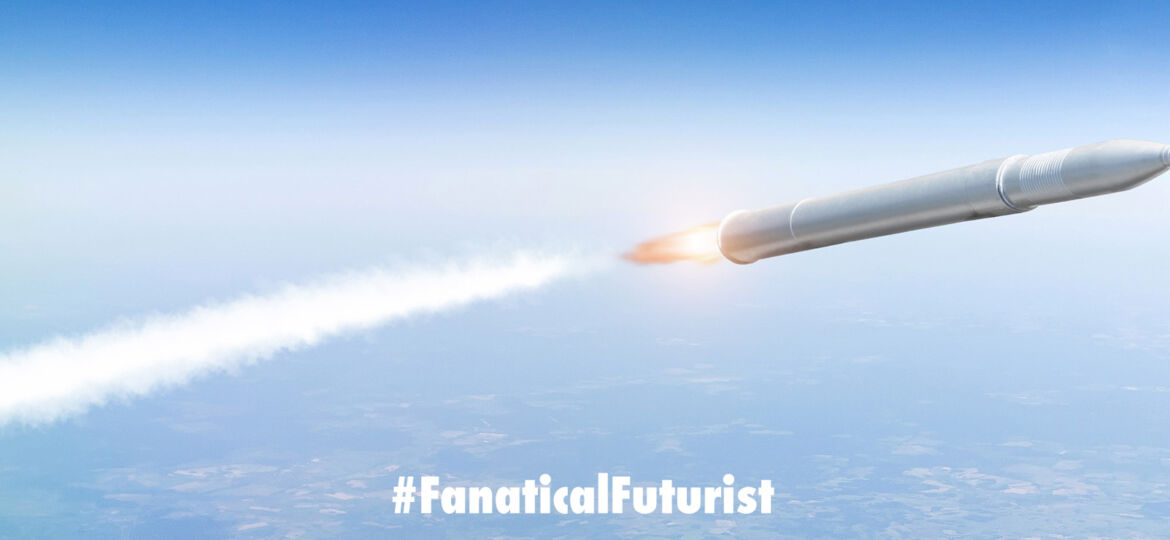
WHY THIS MATTERS IN BRIEF
The new global arms race involves weaponising AI and robots, lasers, telepathy, and hypersonic weapons.
 Interested in the Exponential Future? Connect, download a free E-Book, watch a keynote, or browse my blog.
Interested in the Exponential Future? Connect, download a free E-Book, watch a keynote, or browse my blog.
The future of warfare could, or will, be filled with autonomous hunter killer drones, flying aircraft carriers, and robots, direct energy weapons and lasers, matrix style knowledge uploading, and telepathic cyber-warfare – all for starters. But now, in a bid to catch up with China and Russia who are already close to fielding their first hypersonic weapons, the US Air Force has announced they are working with defense contractors Lockheed Martin, who recently demo’d their stunning autonomous SR-72 hypersonic jet, and Aerojet to develop a new hypersonic cruise missile. The weapon, known as the Hypersonic Conventional Strike Weapon (HCSW, or “Hacksaw”) will be used to strike time-critical targets in places with strong enemy air defenses. The missile’s sheer speed, which will be a minimum of Mach 5, will allow it to penetrate strong enemy air defenses and reach targets before they relocate.
According to Military.com, the hypersonic weapon will follow in the footsteps of the X-51A Waverider scramjet-powered hypersonic vehicle, as shown in the photo above. Boeing built four Waverider vehicles for the Air Force in the early 2010s. The last test, launched from a B-52H Stratofortress off the coast of California in 2013, saw a Waverider hit Mach 5.1 and fly 230 miles in six minutes. The test validated the hypersonic weapon concept but the research – at least in the non-classified world – stopped there.
Hacksaw is described as “a cruise missile, capable of being carried by fighters and bombers.” The B-1B Lancer bomber, for example, could carry between four and eight hypersonic weapons in its internal weapons bays. There’s a little bit of confusion about the program, however: In August 2018, Aviation Week & Space Technology described Hacksaw as a “solid rocket powered, GPS guided missile.” At roughly the same time, FlightGlobal described it as an “air-breathing, ramjet-powered cruise missile.”
Both publications are likely right and together tell the story: Hacksaw needs both a rocket booster and ramjet. Ramjets can propel aircraft at hypersonic speeds, but they can only start working while already moving through the air at a high rate of speed. Hacksaw would need a rocket booster to accelerate it to supersonic speeds, whereupon the ramjet engine would kick in to give it a hypersonic push.
The Air Force plans to have Hacksaw ready for action by 2022. The US Military is pushing into hypersonic weapons in a big way, with the US Army, Navy, and Air Force all pursuing multiple projects. The US Air Force is not only developing Hacksaw, but also the AGM-183A Advanced Rapid Response Weapon, ARRW (“Arrow”).
















